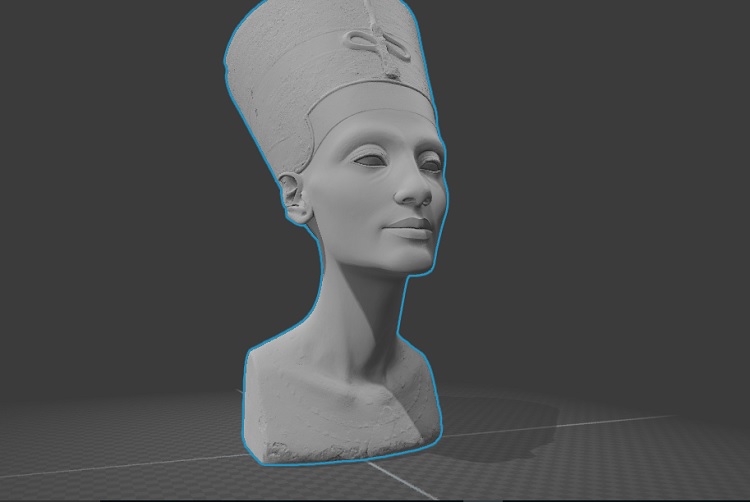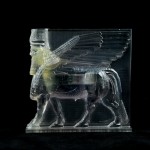Nefertiti’s bust hacked in 3D

Nefertiti for everyone! Two German artists scanned the famous bust of the Egyptian queen kept at the Berlin Neues Museum and then put the 3D print files on line under free license. Commonplace? Not that much. Because the Berlin museum fiercely keeps hold of the original scans of the famous portrait and limits its exploitation in a piecemeal manner. That was all it took for Nora Al-Badri and Jan Nikolai Nelles to imagine a militant artistic performance aiming to “make cultural objects accessible to the general public”.
An authentic hacked copy of the original
Armed with portable scanners concealed under their jackets, the two artists managed to get inside the museum to clandestinely digitize the icon dating from 1340 BC. And they chose the Chaos Communication Congress, the great event of hackers in Hamburg last December, to reveal their project named The Other Nefertiti and put their data online on the Nefertiti Hack website. At the same time, the bust printed in 3D was being exhibited in Cairo during the Something Else biennial. This has been a first in Egypt for a century, even if it was only the 3D version of the priceless treasure.
“The Berlin Museum had the data after a scan for years already, but there was and is no will to share it with the general public, because they are capitalizing on it.”
Nora Al-Badri, hacker artist
The two artists filmed clandestinely scanning the bust:
The bust of discord
For Egypt has consistently demanded from Germany the return of the bust discovered in 1912 by Ludwig Borchardt. In vain. With The Other Nefertiti, The Other Nefertiti, the duo condemns “cynicism” and “cultural exploitation”, claiming a political gesture reflecting the present looting of the Syrian and Iraqi heritage. Their approach is incidentally supported by several Egyptian university lecturers, including Salima Ikram, head of the Egyptology department of the American University of Cairo, where the 3D bust should soon be exhibited.
“But, for the future, we are optimistic that ultimately, the technological possibilities and pressure from the public will lead to a repatriation of most of the objects to the communities and nations they came from, while we can still show copies or digital embodiments to visitors in the Western museums”, Nora Al-Badri tells us.

In order to go a step further regarding performance and to draw attention, the two artists even staged the true-false discovery of the 3D bust in ultra-realist archeological conditions on an authentic excavation site, thanks to advice from the Egyptologist Monica Hanna. “We researched dozens of videos of illegal excavations which are put online by the looters themselves to publish their findings. Our video reveals that a second icon could in fact have been found. The possibility of such a finding isn’t totally unlikely, because it can be assumed that the sculptor created several busts.”
The video of the true-false discovery of Nefertiti’s bust in 3D:
The two artists assure it is the closest possible reproduction of the queen’s portrait. We take their word for it since the thousands of cheap reproductions, including those in 3D, are based on photos or copies of copies of copies.
The Nefertiti Hack website

